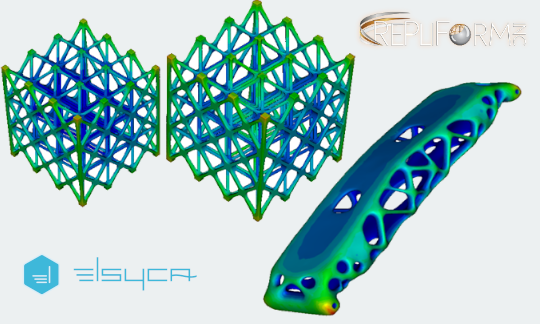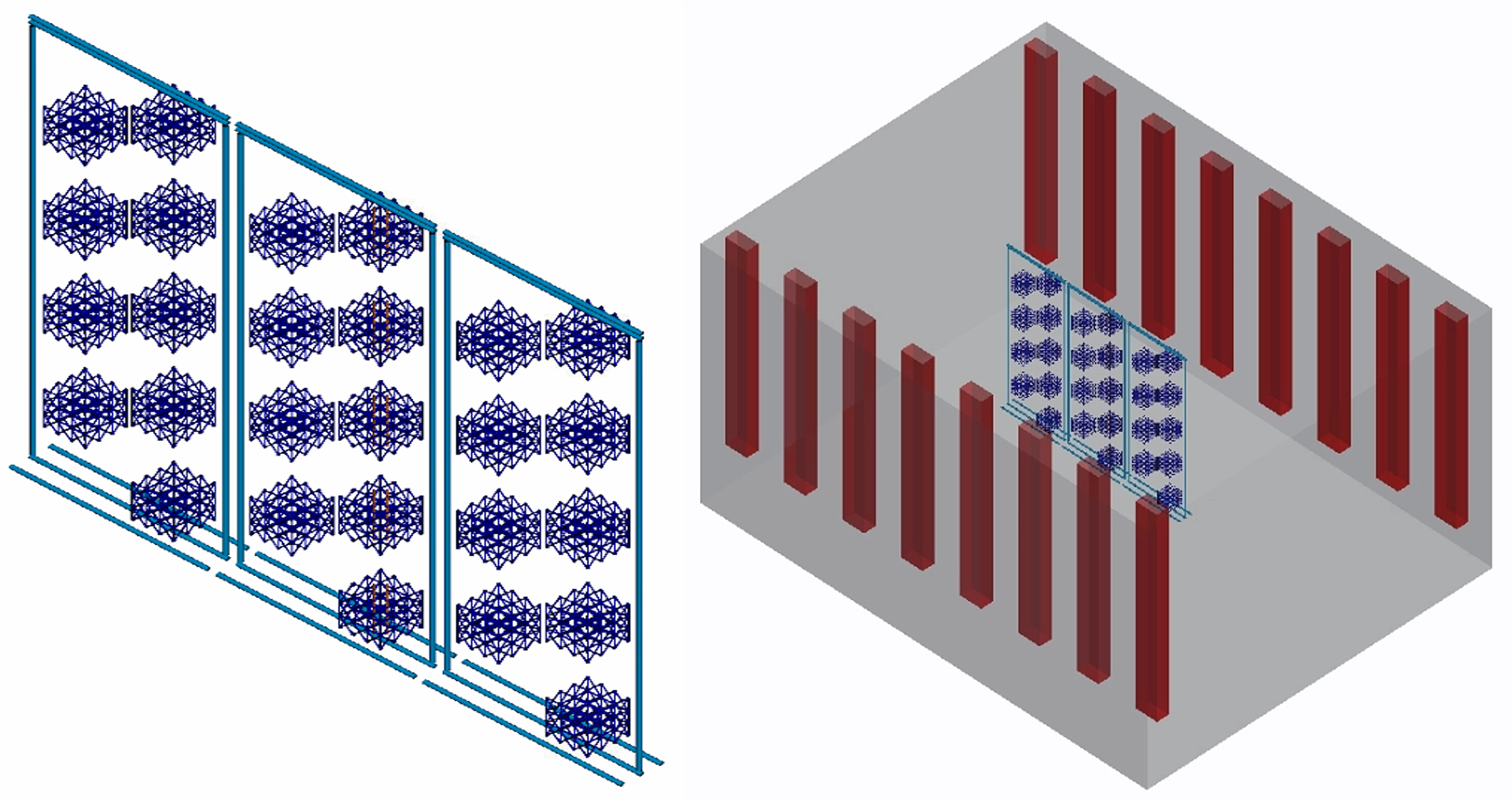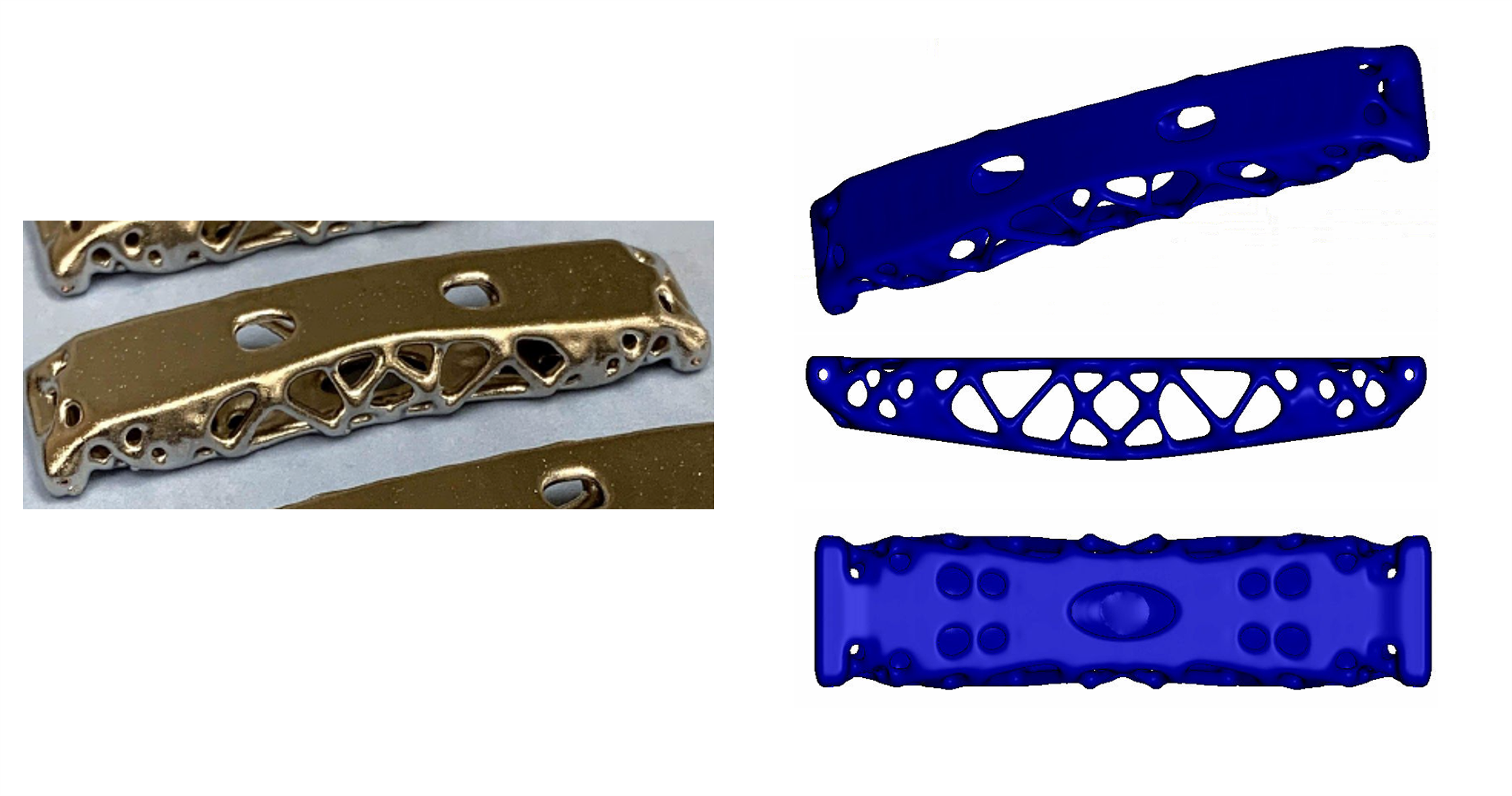
Enhancing the properties of 3D printed plastic components through electroplating process.
How to transform 3D printed parts with electroplating and Computer Aided Engineering

3D printed and that's it?
The integration of 3D printing technology has revolutionized the way products are conceptualized and produced. However, it often presents challenges in achieving the desired physical properties necessary for decorative or functional applications. Similar to various post-processing tasks for 3D printed parts, electroplating seeks to improve the physical properties of the part by enhancing wear resistance, corrosion protection, aesthetic appeal, and thickness. Despite its importance, there is limited understanding within the industry about the process, its mechanisms, and its application to additive manufacturing (AM) parts.
Why electroplating?
Electroplating is a process widely used across various industries to enhance the properties of parts or components. Many metals, including copper, nickel, chrome, tin, lead, zinc, brass, gold, silver, and platinum, are commonly electroplated for both decorative and functional purposes.
Decorative electroplating
Decorative electroplating is common in automotive applications, where chrome coatings embellish plastic components such as grilles, bumpers, wheel rims, and door handles. It is also used for luxury items like watches and jewelry, applying precious metals like gold and silver. Furthermore, electroplating is popular for enhancing plastic parts to resemble polished metal pieces.
Functional electroplating
Functional electroplating primarily aims to protect substrate materials from corrosion by applying a metal coating. In aviation and similar industries, common metals used for plating include cadmium, hard chrome, zinc, zinc-nickel, platinum, tin-zinc, and others. Parts such as landing gears, engine turbines, and bearings often undergo electroplating in this sector.
This functional objective of electrodeposited coatings includes enhancing temperature resistance, providing EMI shielding, improving mechanical properties like stiffness and strength, increasing durability, preventing outgassing or chemical attacks, reducing flammability, and minimizing toxic fumes. Thus, electroplated 3D-printed parts can possess desired material properties and replace specific functional components in assemblies.
Electroplating and 3D printed parts
In 3D printed part post-processing, identifying the substrate material and the intended function of the metal layer, whether decorative or functional, is crucial for successful electroplating. While metallic parts pose fewer challenges when being plated, plastic parts require careful consideration to ensure compatibility with the electroplating chemical bath. Once these factors are clear, the process can proceed effectively.
As part geometry becomes more complex, metal deposition unevenness intensifies, posing challenges in electroplating control. Ensuring uniform metal coating distribution across all surfaces may demand tailored mitigation strategies.
Managing complex geometries
Due to the complexity of 3D printed parts, utilizing a Computer Aided Engineering approach is recommended for electroplating. This involves analyzing the process upfront to identify areas of under- and over-plating, allowing anticipation of metal layer thickness distribution prior to starting electroplating. Consequently, this facilitates optimizing process settings and achieving accurate plating on the first attempt, meeting the required metal layer thickness specifications.
Enhancing electroplating via Computer Aided Engineering is vital in the era of Industry 4.0 and Smart Manufacturing, integrating 3D printing and digital twin technologies.
The Computer Aided Engineering approach optimizes electroplating by creating a digital twin of the actual process setup. This virtual representation integrates data on infrastructure, operating parameters, bath performance, component geometry, and rack layout before any wet runs.

This method anticipates current density and metal layer thickness distributions, pinpointing over- and under-plating risks. Armed with this insight, a tailored mitigation strategy can be developed for the process setup and part geometry. This is vital for complex parts like 3D printed ones, where adjusting rack layout or process parameters may not ensure uniform coating coverage.

Enhancing process setup and tooling for complex parts is crucial. However, evaluating risks and developing effective mitigation strategies typically takes months and wasted resources. With Computer Aided Engineering, this can be done in minutes, reducing the need for extensive wet tests and saving time, money, and resources. This approach enhances our process understanding and control, ensuring consistently high quality.

What's next?
In conclusion, electroplating plays a crucial role in enhancing the functionality, durability, and aesthetics of 3D printed parts. Its ability to add a protective layer of metal is key to extending the lifespan of the 3D printed parts. Moreover, electroplating enhances aesthetics, making 3D printed parts more appealing if required.
In the ongoing dynamic landscape of 3D printed objects, a robust and continuous synergy between electroplating and 3D printing operations not only enables innovation but improves efficiency. Computer Aided Engineering solutions and the use of digital twin approach are fundamental pillars to enable manufacturers to optimize their processes, ensuring both quality and productivity meet the highest standards.
Further reading:
You might be interested reading our paper A.Franczak, B.Van den Bossche, S. Wise - Enhancing the mechanical properties of 3D printed plastic components through electroplating process, pre-optimization with a Computer Aided Engineering approach (AEROMAT 2024).
Discover more about RePliForm: https://repliforminc.com/
